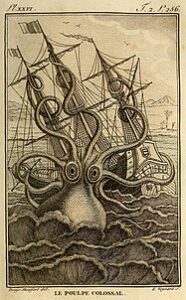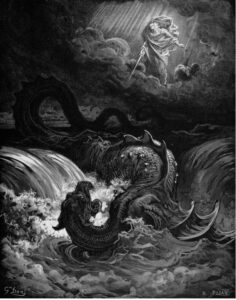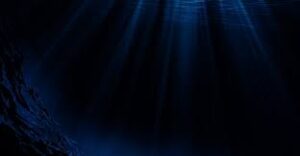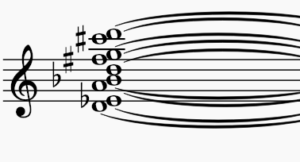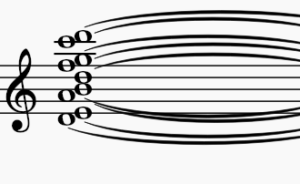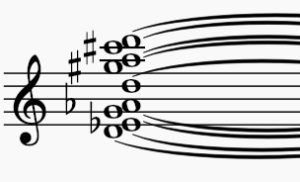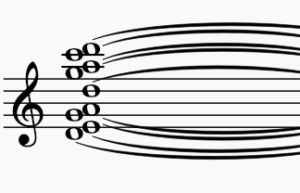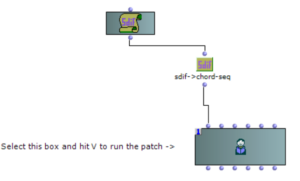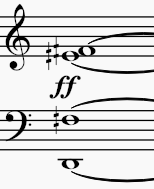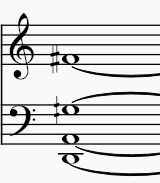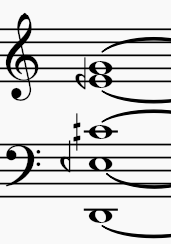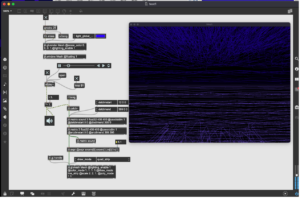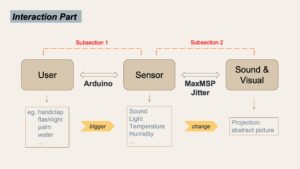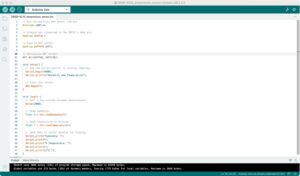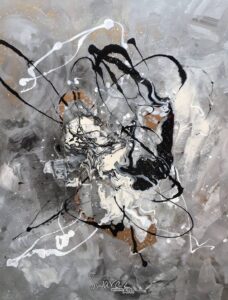Brochure
Background
Presence refers to the psychological sensation of being fully immersed in and surrounded by a virtual environment (Mathivanan, 2017, p. 374). Building upon the concept of presence, our group’s project will aim to create an interactive, immersive experience focusing on thalassophobia and the journey towards calmness.
The popularity of sea-based horror films, such as Jaws (Spielberg, 1975), Deep Blue Sea (Harlin, 1999), and Open Water (Kentis, 2003), shows the power of deep water to trigger fear. Drawing inspiration from these films, our project will explore sensations associated with thalassophobia to set the foundation for this immersive experience. As the immersive experience progresses, the visuals and the soundscape will broaden the scope to present different layers of thalassophobia, incorporating more abstract and generalized fears. The various layers of thalassophobia include the immersion in a dangerous deep-sea environment, the chaotic psychical and mental responses triggered by the deep-sea environment, and the fear of the unknown. The progress of getting through the three layers of thalassophobia will be achieved through participants’ interaction, enhancing the immersive experience and evoking deeper emotional experiences. Throughout the journey, participants will need to interact with the visuals and audio to get through various layers of thalassophobia, ultimately transitioning to calmness.
Research
Our project will first start by exploring the studies on thalassophobia, aiming to gain information into the factors contributing to this specific type of fear and the environments that may evoke thalassophobia. Following this, we will focus on the symptoms of thalassophobia to have a deeper understanding of the physical and mental reactions that thalassophobia can trigger. These findings will inform and develop our project design. Lastly, we will look at immersive interactive art created by other artists, drawing insights and inspiration from their innovative approaches and techniques.
Design
This section will present the ideas of our project design from four aspects, including sound design, composition, visual component and interaction installation.
Prototype
Below is a testing prototype for user interaction using different types of sensors, such as sound sensor, and temperature and humidity sensor. The prototype is designed to explore different ways of interaction. We also test our visual component in MaxMSD.
Venue and Setting
Location:
- West Court
Equipment:
- Projections
- Projection Screens
- Speakers
- Sensors
- Laptop
Member’s Responsibilities
Yuan Mei:Sound Editing
Surround Sound Design
Location Setup
Ruojing Chen:Sound effects design
Maxmsp visual effect design
Jingqi Chen:Arduino code setting
Sensor connecting
Craig Morrison:Music design
References
Bence, S. (2023) How Do I Know if I Have Thalassophobia?. Available at: https://www.verywellhealth.com/thalassophobia-5093770 (Accessed: 12 February 2024).
Content Engine LLC (2023) Find out what “thalassophobia” is, a condition that causes fear of deep water, sea animals and immensity. English ed. Miami: ContentEngine LLC.
Denys-Montfort, P. (1801) A “colossal octopus” that attacked a ship. Available at: https://en.wikipedia.org/wiki/Kraken (Accessed: 12 February 2024).
Doré, G. (1865) The Destruction of Leviathan. Available at: https://en.wikipedia.org/wiki/Leviathan (Accessed: 12 February 2024).
Fineberg, J. (2000) Guide to the basic concepts and techniques of spectral music. Contemporary music review. 19 (2), pp. 81–113.
Gepp, K. (2023) ‘Thalassophobia: How to Overcome Your Fear of the Ocean’, Heathline. 13 April. Available at: https://www.healthline.com/health/anxiety/fear-of-the-ocean (Accessed: 12 February 2024).
Harlin, R. (1999) The Deep Blue Sea. Warner Bros.
Harvey, J. (2000) Spectralism. Contemporary music review. [Online] 19 (3), pp. 11–14.
Hasegawa, R. (2009) Gérard Grisey and The “Nature” of Harmony. Music analysis. 28 (2/3), pp. 349–371.
Hill, S. C. (2018) A “Sound” Approach: John Cage and Music Education. Philosophy of music education review. 26 (1), pp. 46–62.
Hott, B. (2021) Discovering the Value of the Invaluable Deep Sea. Available at: https://www.themarinediaries.com/tmd-blog/discovering-the-value-of-the-invaluable-deep-sea (Accessed: 12 February 2024).
Jamieson, Alan J. et al. (2021) ‘Fear and Loathing of the Deep Ocean: Why Don’t People Care about the Deep Sea?’ ICES journal of marine science, 78(3), pp. 797–809.
Jarrett, C. (2022) ‘Thalassophobia: Everything you need to know’, BBC Science Focus, 16 July. Available at: https://www.sciencefocus.com/the-human-body/thalassophobia (Accessed: 12 February 2024).
Kentis, C. (2003) Open Water. Lions Gate Films.
Latham, A. (2011). The Oxford Companion to Music. Revised 1st Edition ed. Oxford University Press.
Levin, G. (2000) Audiovisual Environment Suite. Available at: https://www.flong.com/archive/projects/aves/index.html (Accessed: 11 February 2024).
Mathivanan, K. et al. (2017) ‘A Study of Virtual Reality’, International Journal of Trend in Research and Development, 4(3), pp. 374-377.
Persichetti, V. (1961). Twentieth Century Harmony: Creative aspects and practice. New York: W.W Norton
Spielberg, S. (1975) Jaws. Universal Pictures.
Tmema & Ars Electronica Futurelab (2002) Tmema & Ars Electronica Futurelab. Available at: https://vimeo.com/17229647 (Accessed: 11 February 2024).
Varvara & Mar (2014) Wishing Wall with audio explanation. Available at: https://www.youtube.com/watch?v=MX0Z6aHZYDw&ab_channel=MarCanet (Accessed: 11 February 2024).
Villamirella (2024) The legend of Siren Molpé. Available at: https://www.villamirella.it/en-blog/myth-sirena-molpe-palinuro (Accessed: 12 February 2024).
